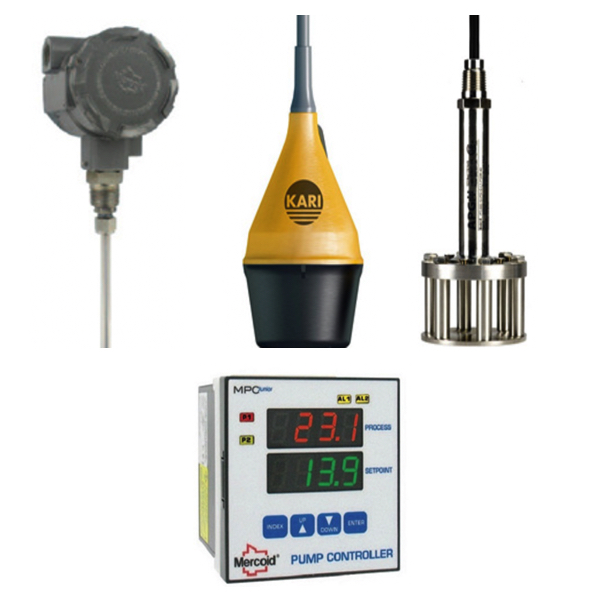Level Switches & Transmitters

Devices used for monitoring and controlling liquid levels in water storage tanks, reservoirs, and various industrial processes are absolutely essential to ensuring the safety and efficiency of these systems. Among these devices, level switches and level transmitters play key roles. In using liquid level switches, one would typically sense either the presence or the absence of a liquid at a specific level and then send an on/off signal to some control device when the liquid hit a defined point. Things like pumps, alarms, or other control systems could be used to "do something" when the liquid level reached that defined point.
In contrast, we have the level transmitters, which send data to indicate the level of the liquid in a tank. These devices work well in the application of accurate level measurement in tank monitoring. They provide a nice continuous level measurement. They give an accurate measurement of the liquid in the tank, and they do it over an extended range. This is why you will find these devices used in process control, wastewater treatment, and the food and beverage industry. They give accurate measurements even in hazardous environments. They give satisfactory performance even with process fluids that are difficult to measure—like those with a range of viscosities or that have a density different from water.
More Information about Level Switches and Transmitters
Level switches and level transmitters for liquids are nearly always fabricated from materials like stainless steel, brass, or aluminum. These sturdy devices are needed for the long term and are expected to work in even the most trying conditions found in industry. There are many options, from simple to sophisticated systems, for mounting these instruments on tanks, so not every level switch or level transmitter found in industry is necessarily cost effective. Yet, when using a level switch or transmitter makes good financial sense, the installation of either one is well justified. Accurate liquid-level measurement within any tank used in industrial processes pays dividends in just about any currency one might think to count.
Transmitters vs Transducers
Some of the most common types of transmitters and transducers can be found on pressure instruments. Examples of these include: drop-in well pressure devices and devices that measure the pressure in a pipe or gas chamber. Transmitters and transducers can also be found on flow and speed measurement devices.
What is the difference between transmitters and transducers?
The main difference is the way they send data to the monitoring device, like a PLC. In terms of measurement, the transmitter will reference a measuring unit by sending a milliamp signal (such as 4-20 mA). A transducer will reference a measuring unit by sending a voltage signal, typically in volts or millivolts.
Why have the two different types of transmission methods?
The method will depend on the application. If the electrical connection in the application travels a short distance, a pressure transducer is the better choice. Pressure transducers are smaller with fewer active electronic components that can be upset by electromagnetic interference. Also, the voltage signals transmitted over longer distances are subject to voltage drop and signal corruption. A transmitter is better for transmitting signals over a long distance.

